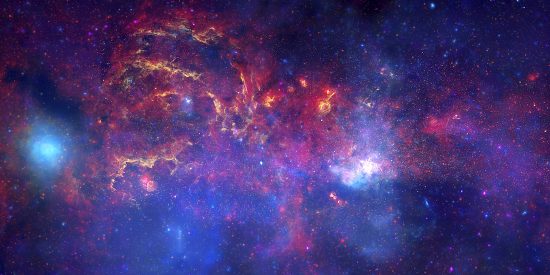
Aug 28, 2019
Magnetic fields in space are difficult for astronomers to explain.
In a previous Picture of the Day, physicists from Princeton University’s Plasma Physics Laboratory (PPL) announced that “turbulence” in plasma creates magnetic fields. However, they do not understand how those small fields can coalesce into one large field.The question is, how do those persistent magnetic properties arise?
When fluid dynamic phenomena are studied, small effects in various systems combine. For example, the self-organization phenomenon in a tornado. Tornadoes are often observed with multiple tendrils, or funnels, that combine into one large vortex. Regardless of how tornadoes form and vanish, considering magnetic fields without also thinking about the underlying electric fields is like trying to understand floods without considering the rain.
Magnetic fields in stars and galaxies are easy to understand, since it is electromagnetic fields that exist and not magnetic fields in isolation. Although the PPL team referred to “plasma”, they are investigating mechanical action. It is a common mistake to think of plasma in terms of “ionized gas”, subject to the same gravity-based influences experienced by neutral matter.
As written elsewhere, plasma is an emergent phenomenon. In other words, it is a manifestation of many conditions that form a single condition. Plasma occurs as a result of phenomena like characteristic velocity: the ion velocity in a plasma tends to be determined by electric fields generated inside. Also, the degree of ionization affects the general conditions of a plasma, making it more or less susceptible to electromagnetic fields. Those conditions, and more, combine in plasma.
Electricity in space is difficult to detect—its effects can be mistaken for other radiative emissions—but electromagnetic fields can be mapped. Modern astronomers think that the fields are “primordial” fragments left over from the Big Bang. They rely on that conclusion to explain how the structures that make up the Universe were formed.
However, moving charges constitute an electric current that can generate a magnetic field. That current is then “wrapped” in the field. When more charged particles accelerate in the same direction, the field gets stronger. For charged particles to move, they must move in a circuit. Energetic events cannot be explained by local conditions, alone, the entire circuit is involved. For that reason, Electric Universe theory emphasizes connectivity with an electrically active network composed of Birkeland current filaments threading through the cosmos.
Stephen Smith
The Thunderbolts Picture of the Day is generously supported by the Mainwaring Archive Foundation.












